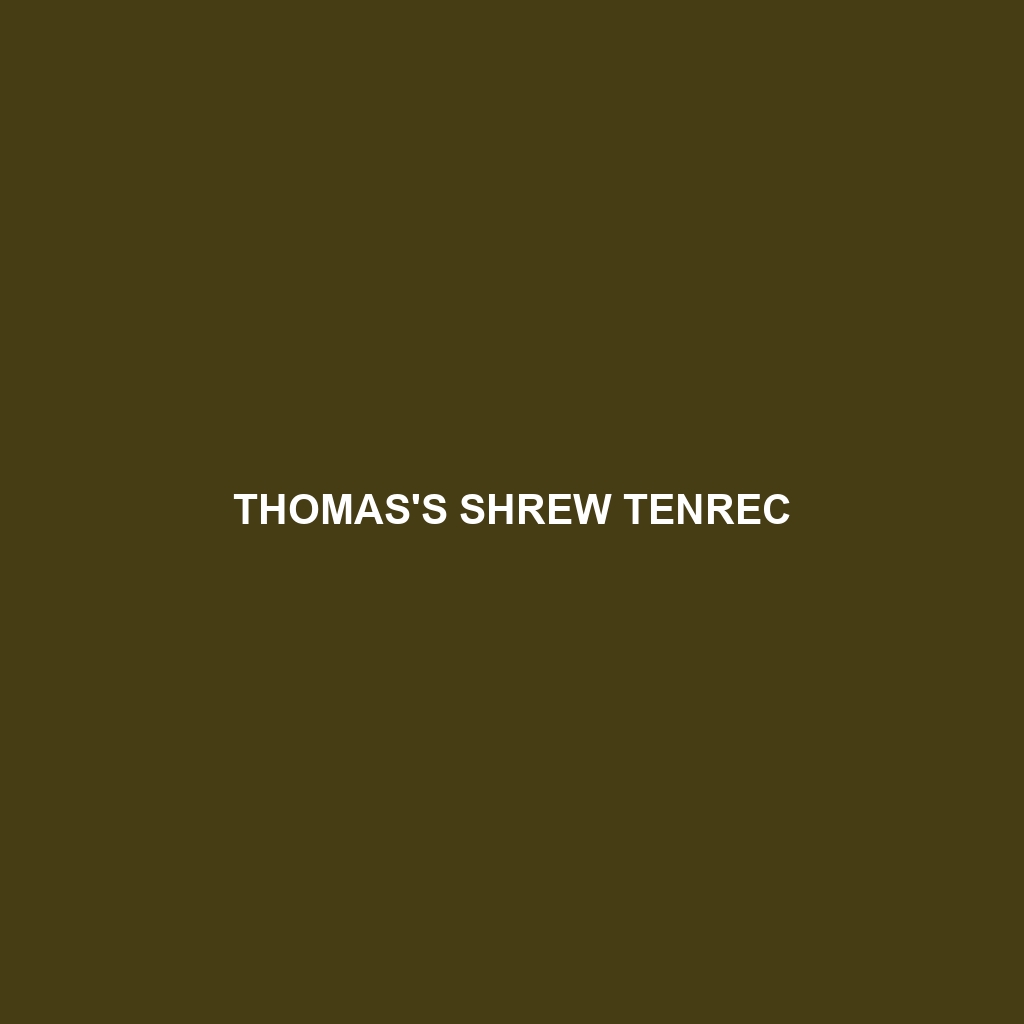Thomas’s Shrew Tenrec: An Intriguing Insectivore of Madagascar
Thomas’s Shrew Tenrec (Microgale thomasi) is a small, nocturnal mammal native to the lush forests of Madagascar. Despite its name, this unique creature is not a shrew but a tenrec, a group of animals that have evolved to fill various ecological niches on the island. Known for their keen sense of hearing and insectivorous diet, Thomas’s Shrew Tenrecs play a crucial role in maintaining the ecological balance within their habitat.
Physical Characteristics
Size: Thomas’s Shrew Tenrec is relatively small, typically measuring about 10 to 14 cm (4 to 5.5 inches) in body length, with a tail that can add another 8 to 10 cm (3 to 4 inches).
Weight: These tenrecs are lightweight, generally weighing between 25 to 40 grams (0.9 to 1.4 ounces).
Coloration: Their fur is usually dark brown to black, providing excellent camouflage against the forest floor. The underbelly is often lighter in coloration.
Special Features: They possess elongated snouts and sharp teeth, adaptations that assist in their insectivorous diet. Their large, sensitive ears help them detect the faintest sounds of prey.
Behaviors
Social Interactions: Thomas’s Shrew Tenrec tends to be solitary, except during the breeding season. They communicate using high-pitched sounds and possibly some form of chemical signaling.
Feeding Habits: As insectivores, their diet primarily consists of insects, worms, and other small invertebrates. They use their acute sense of smell and hearing to locate prey in the leaf litter and soil.
Ecological Roles: These tenrecs are important for controlling insect populations, thereby contributing to the health of their forest ecosystems.
Habitats
Natural Habitat: Thomas’s Shrew Tenrec is primarily found in Madagascar’s tropical and subtropical moist broadleaf forests. They prefer areas with dense leaf litter and abundant undergrowth, which provide excellent cover and a rich supply of prey.
Range: They are endemic to Madagascar, meaning they are found nowhere else in the world.
Adaptations
Sensory Adaptations: Their large ears and acute sense of smell are essential for detecting prey in the dark, humid forest environment.
Physical Adaptations: Their sharp claws and sturdy limbs allow them to dig through leaf litter and soil with ease.
Behavioral Adaptations: Nocturnality helps them avoid many predators and reduce competition for food.
Conservation Status
Current Status: The conservation status of Thomas’s Shrew Tenrec is currently listed as Least Concern by the IUCN Red List. However, habitat destruction due to deforestation poses a potential threat to their populations.
Conservation Efforts: Efforts to preserve Madagascar’s forests indirectly benefit the Thomas’s Shrew Tenrec. Conservation programs aimed at protecting these ecosystems are crucial for their survival.
Fascinating Fun Facts
Misleading Name: Despite its name, Thomas’s Shrew Tenrec is more closely related to other tenrecs and even elephants than to true shrews.
Diverse Family: The tenrec family is incredibly diverse, with members adapted to a wide range of niches, from aquatic environments to arid regions.
Unique Evolution: Tenrecs are part of a unique evolutionary lineage that showcases the spectacular adaptive radiation that occurred in Madagascar.
In , Thomas’s Shrew Tenrec is a fascinating example of Madagascar’s unique biodiversity. With its specialized adaptations and important ecological role, this small but significant mammal highlights the intricate balance of life in Madagascar’s forests.
